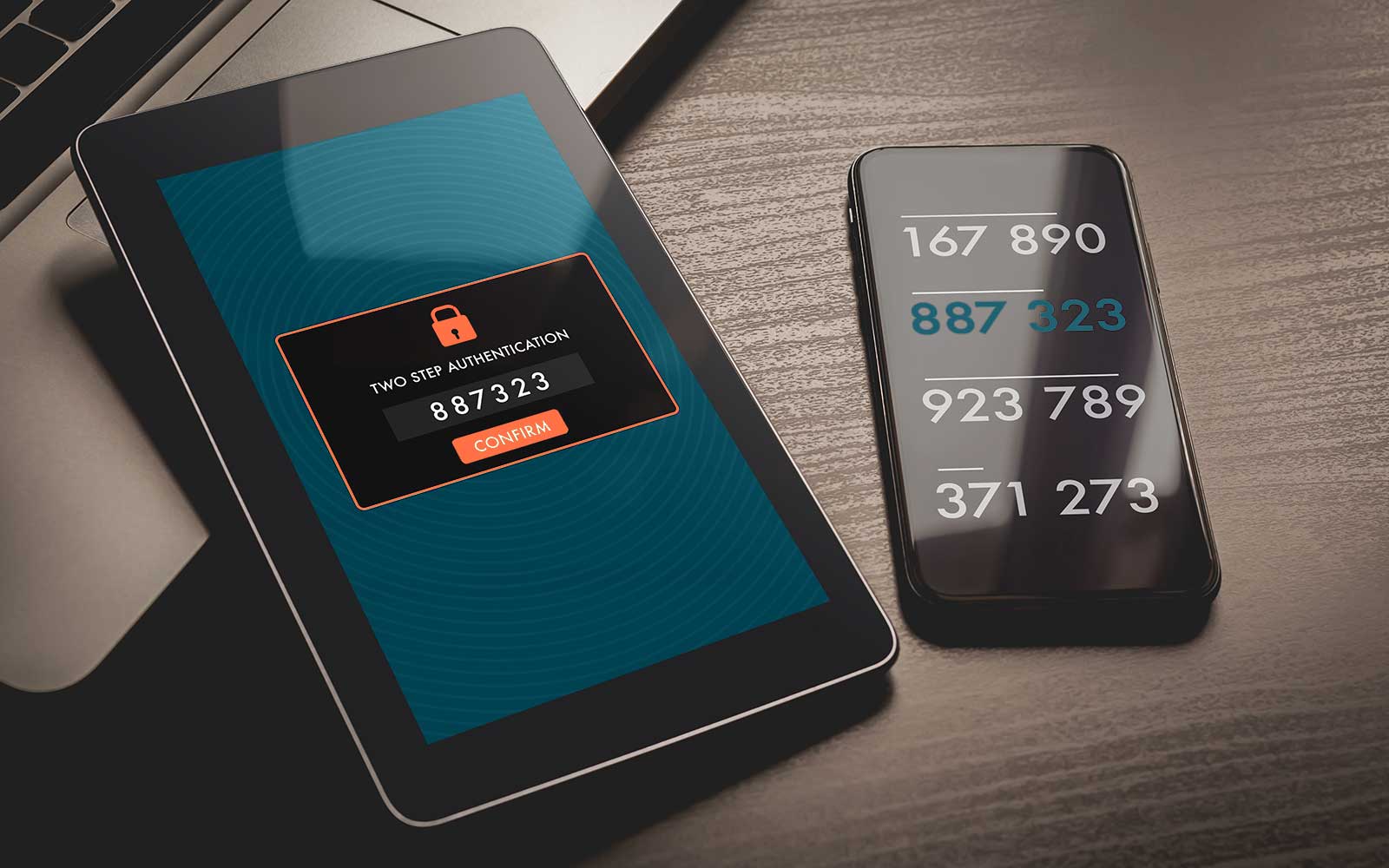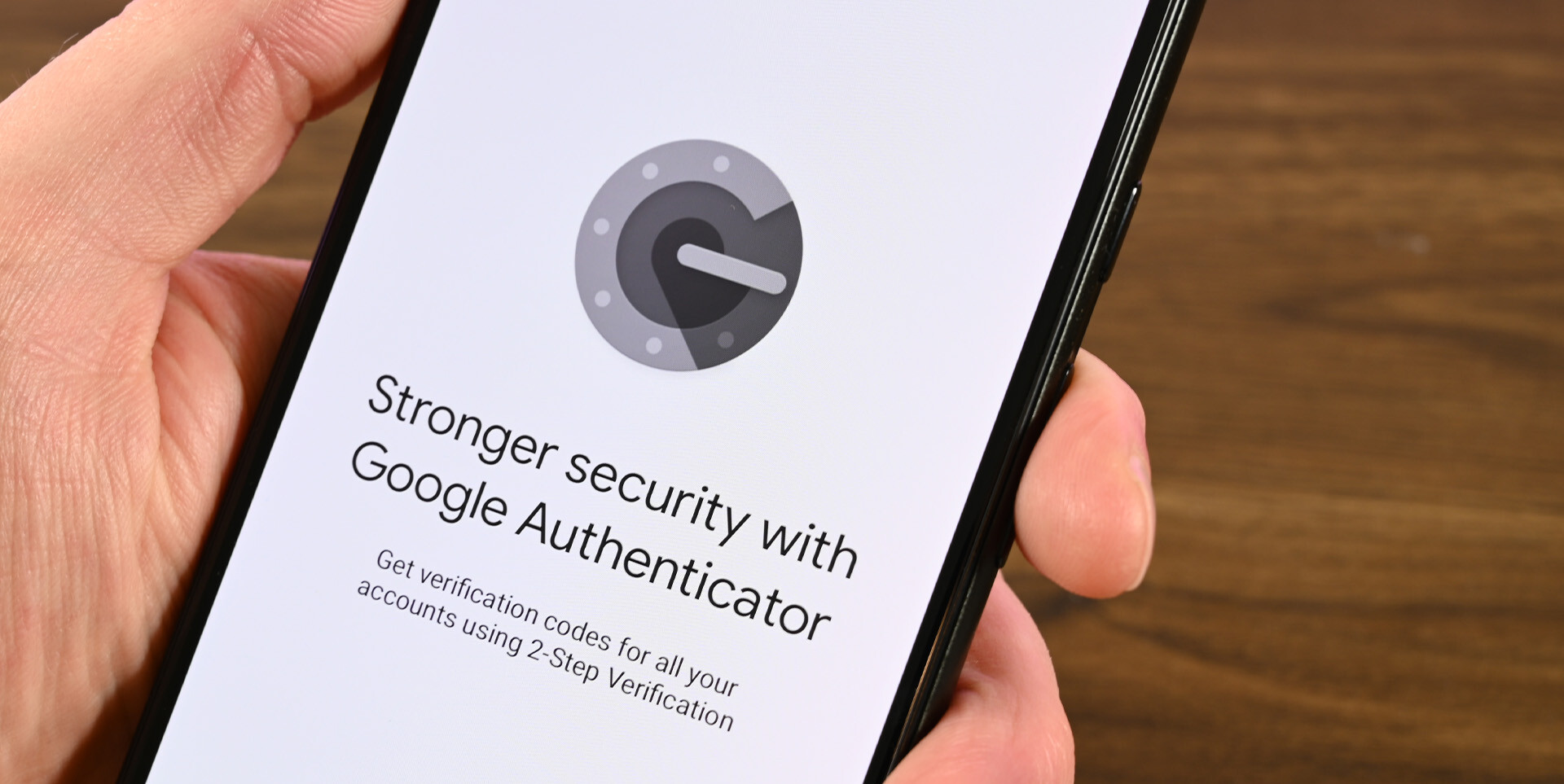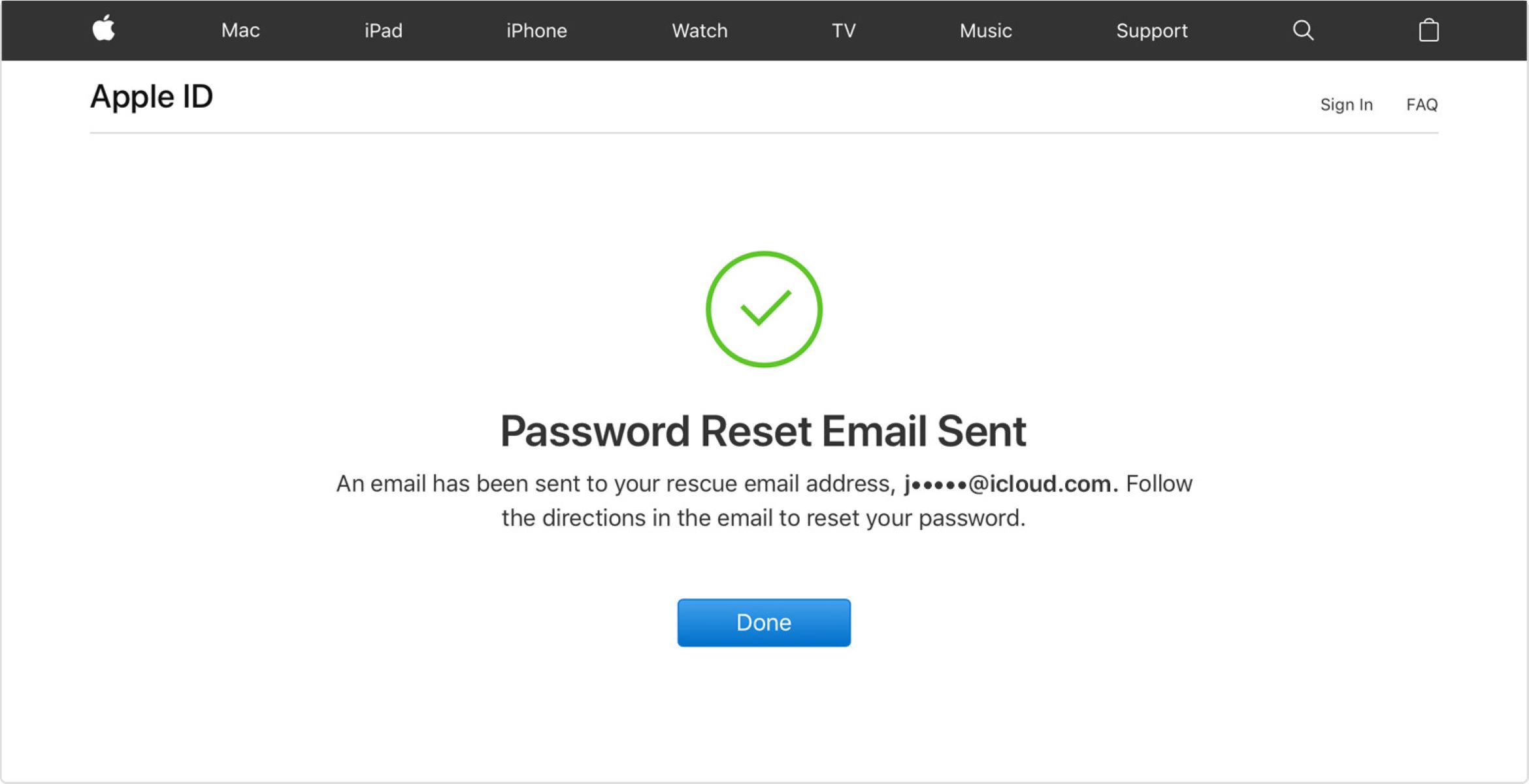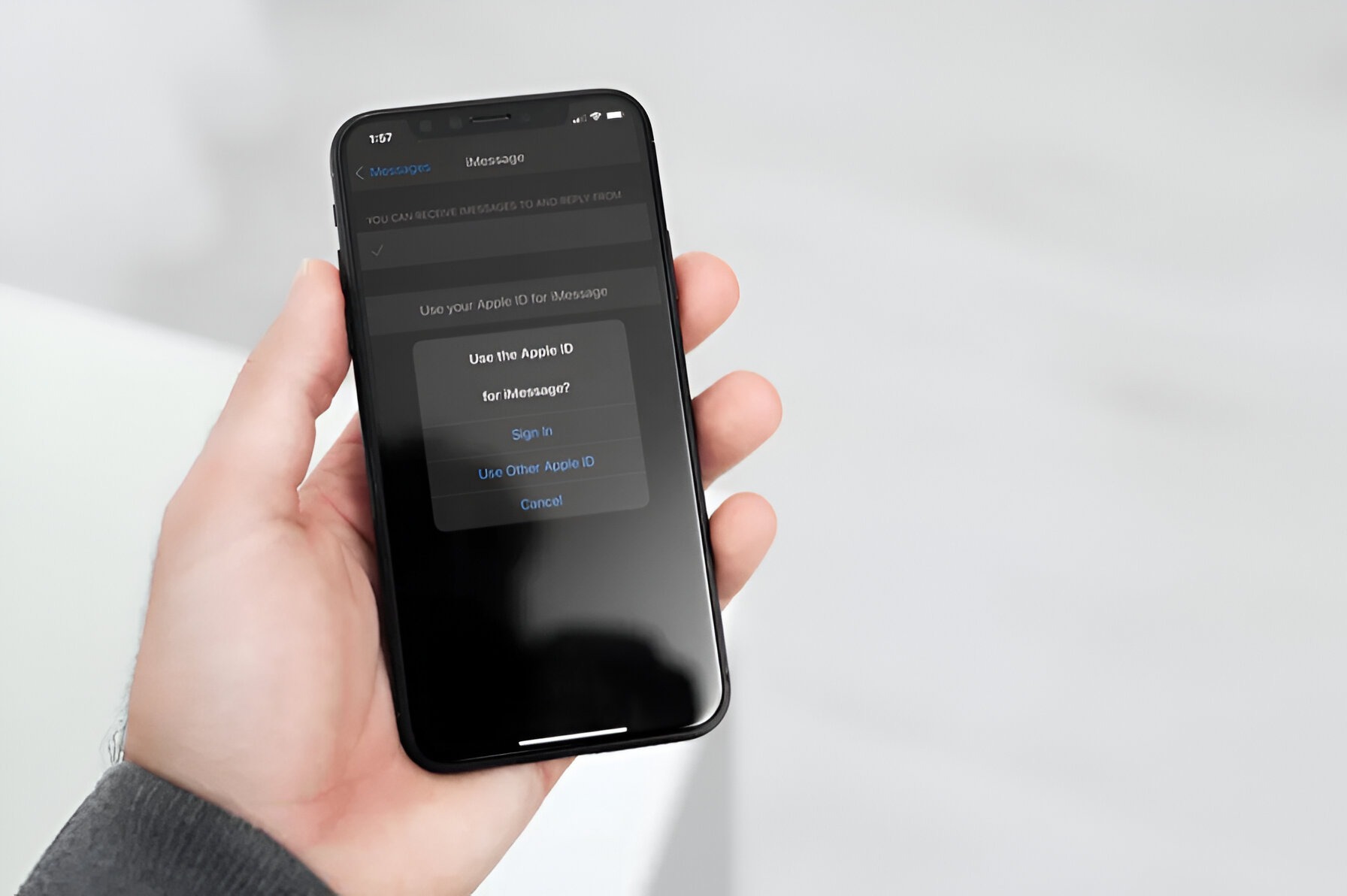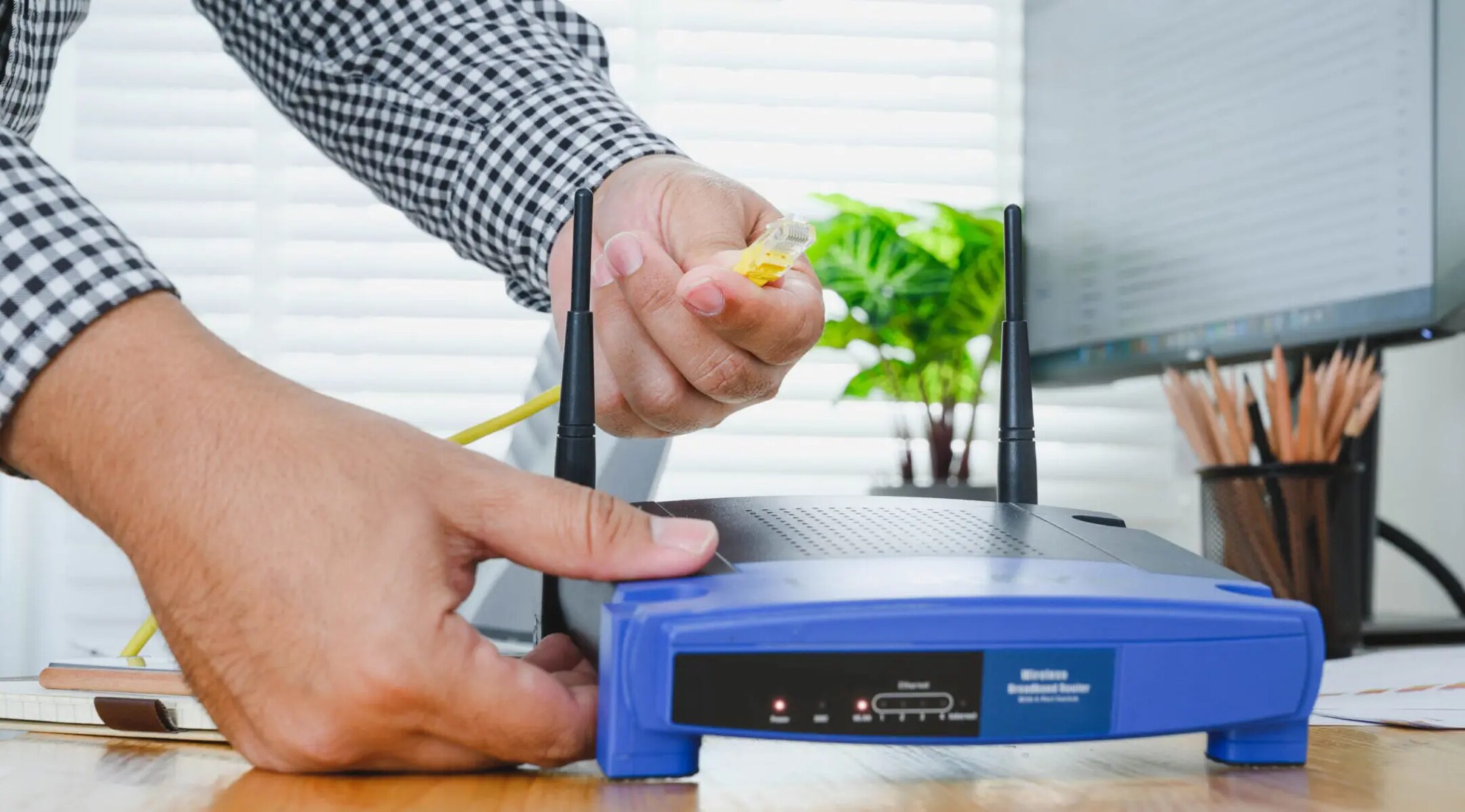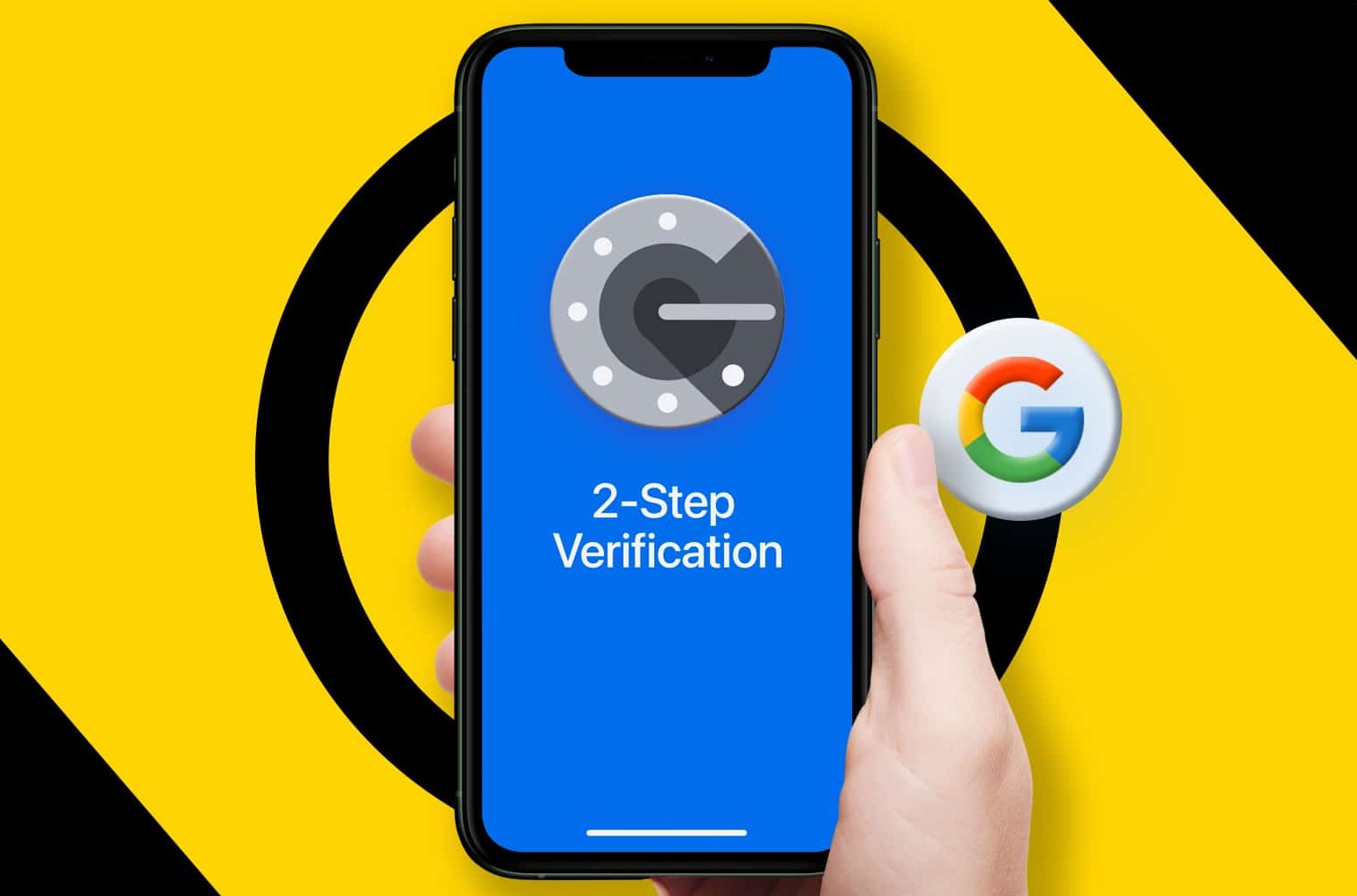Introduction
Google Authenticator has become one of the most popular two-factor authentication (2FA) tools, offering an additional layer of security for users’ online accounts. With the increasing importance of protecting our digital identities, many individuals and organizations rely on Google Authenticator to safeguard their sensitive information.
But what if someone wants to crack the Google Authenticator code? While it is essential to promote ethical behavior and respect user privacy, understanding the methods used to crack such codes can help raise awareness about potential vulnerabilities in the system. In this article, we will explore the concept of Google Authenticator, how it works, and the risks involved in attempting to crack it.
What is Google Authenticator?
Google Authenticator is a mobile app developed by Google that generates one-time passwords (OTP) used for 2FA. It provides an extra layer of security beyond a username and password by requiring a unique code that changes every few seconds. This code is generated based on a time-based algorithm and is inputted alongside the regular login credentials to validate the user’s identity.
How does Google Authenticator work?
Google Authenticator uses a Time-based One-Time Password (TOTP) algorithm to generate the six-digit code. When setting up 2FA for an account, a secret key is generated and shared between the server and the Google Authenticator app on your device. This secret key serves as the seed for generating the OTPs. Both the server and the app use this shared secret key and the current time to generate the same six-digit code, which remains valid for a short period of time.
Why would someone want to crack the Google Authenticator code?
Although cracking the Google Authenticator code is ethically and legally prohibited, there are individuals who attempt to do so for various reasons. Some of the common motives include:
- Gaining unauthorized access to someone’s online accounts, such as social media, email, or financial platforms.
- Collecting personal information for identity theft or fraud.
- Testing the security of the Google Authenticator system to identify potential vulnerabilities.
- Engaging in malicious activities such as spreading malware or conducting phishing attacks.
While the motivations behind cracking the Google Authenticator code may vary, it is important to understand the potential risks and consequences associated with such actions.
What is Google Authenticator?
Google Authenticator is a popular two-factor authentication (2FA) tool developed by Google to enhance the security of online accounts. It provides an additional layer of protection beyond the traditional username and password combination, making it more difficult for unauthorized individuals to gain access to sensitive information.
When setting up 2FA using Google Authenticator, users need to download the mobile app onto their devices, which can be either iOS or Android. During the initial setup process, a unique secret key is generated for each account that is protected by 2FA. This secret key is stored securely on the user’s device and is used to generate one-time passwords (OTPs) that expire after a short period of time.
Once the Google Authenticator app is set up, it generates a new six-digit code every 30 seconds. This code must be entered alongside the regular login credentials when accessing the protected account. The app’s time-based algorithm ensures that the generated code is synchronized with the server’s clock, ensuring accuracy and security.
One of the advantages of Google Authenticator is that it is not reliant on an internet connection to generate OTPs. The secret key stored on the user’s device allows the app to generate OTPs even in offline mode, making it a reliable 2FA method even in areas with limited network connectivity.
Furthermore, Google Authenticator can be used to secure a wide range of online accounts, including email services, social media platforms, financial institutions, and more. Many popular websites and services support Google Authenticator as an additional security measure, offering users the opportunity to strengthen their account security.
It is important to note that Google Authenticator is just one of many 2FA methods available. Other methods include SMS-based verification, hardware tokens, and biometric authentication. Each method has its own advantages and disadvantages, and users should choose the one that best fits their needs and preferences.
In summary, Google Authenticator is a widely-used and trusted 2FA tool that adds an extra layer of security to online accounts. By requiring users to enter a unique one-time password, generated by the mobile app, alongside their regular login credentials, Google Authenticator helps prevent unauthorized access and protects the privacy of user information.
How does Google Authenticator work?
Google Authenticator employs a time-based one-time password (TOTP) algorithm to generate the unique six-digit codes used for two-factor authentication. Here’s a breakdown of how it works:
- Setup process: When a user enables Google Authenticator for an account, a secret key is generated by the server. This secret key is then securely transmitted to the user’s device which has the Google Authenticator app installed.
- Code generation: The Google Authenticator app uses the secret key and the current time to generate a six-digit code. This code is unique to the user’s account and changes every 30 seconds. The generation of the code is based on a hash function that combines the secret key and the time.
- Code synchronization: Both the server and the app are synchronized using the same secret key and time, ensuring that they generate the same six-digit code at any given moment. This synchronization is crucial for the code to be accepted by the server when logging in.
- Login process: When logging into an account protected by Google Authenticator, the user is prompted to enter their regular login credentials (username and password). After providing this information, they need to enter the six-digit code currently displayed in the Google Authenticator app on their device.
- Code validation: The server receives the user’s login credentials and the entered six-digit code. It generates a code using the same secret key and time to compare it with the entered code. If the two codes match, the login is considered valid and access to the account is granted.
By leveraging the TOTP algorithm, Google Authenticator ensures that the codes are unique, time-based, and constantly changing. This adds an extra layer of security to the authentication process since the generated codes are valid only for a short period of time and cannot be reused or predicted.
Additionally, the secret key used in the code generation process is securely stored on the user’s device and is never transmitted during the login process. This enhances the security of Google Authenticator by minimizing the risk of secret key interception or compromise.
In summary, Google Authenticator uses a time-based one-time password algorithm to generate unique six-digit codes that are synchronized between the server and the user’s device. This synchronization ensures that the codes generated by the app are valid at the moment of login, providing an extra layer of security to the authentication process.
Why would someone want to crack the Google Authenticator code?
While cracking the Google Authenticator code is ethically and legally prohibited, it is important to understand the motivations behind such attempts and the potential risks associated with them.
There are several reasons why someone might want to crack the Google Authenticator code:
- Gaining unauthorized access: One of the primary motives for cracking the Google Authenticator code is to gain unauthorized access to someone else’s online accounts. By bypassing the two-factor authentication, the attacker can potentially gain control over the victim’s accounts, such as email, social media, or financial platforms.
- Collecting personal information for identity theft: Cracking the Google Authenticator code can provide attackers with access to personal information stored in the victim’s online accounts. This information can then be used for identity theft, fraud, or other malicious activities.
- Testing the security of Google Authenticator: Some individuals may attempt to crack the Google Authenticator code to identify potential vulnerabilities in the system. This can be motivated by a desire to improve the security of Google Authenticator or to demonstrate weaknesses for educational or research purposes.
- Engaging in malicious activities: Cracking the Google Authenticator code can provide attackers with a gateway to engage in various malicious activities, such as spreading malware, conducting phishing attacks, or compromising other users’ accounts.
It is important to note that attempting to crack the Google Authenticator code is illegal and unethical. Violating someone’s privacy, stealing personal information, or engaging in unauthorized access to accounts can have severe consequences and legal repercussions.
Furthermore, cracking the Google Authenticator code is an intricate and challenging task. The security measures implemented in the system, such as the use of a time-based algorithm and the secret key stored securely on the user’s device, make it extremely difficult to crack the codes without proper authorization.
In summary, while there may be various motivations behind attempting to crack the Google Authenticator code, such actions are illegal and unethical. The primary reasons generally involve gaining unauthorized access, collecting personal information, testing system vulnerabilities, or engaging in malicious activities. It is important to understand the risks and consequences associated with such actions and to always respect the security and privacy of others.
Risks and consequences of cracking the Google Authenticator code
Attempting to crack the Google Authenticator code can have serious risks and consequences, both legally and ethically. Understanding these risks is essential to raising awareness about the importance of respecting user privacy and the need to maintain the security of online accounts.
Legal Consequences:
Cracking the Google Authenticator code is illegal and falls under unauthorized access, hacking, and identity theft, among other cybercrime categories. Engaging in such activities can lead to severe legal consequences, including criminal charges, fines, and imprisonment. Authorities have become increasingly vigilant in prosecuting individuals involved in hacking, emphasizing the seriousness of such offenses.
Personal Information Exposure:
Cracking the Google Authenticator code can provide attackers with access to personal information stored in the victim’s online accounts. This information can include sensitive data like financial details, login credentials, private communications, and personal identification information. The exposure of personal information can have long-term consequences, such as financial loss, reputation damage, and potential identity theft.
Account Compromise:
By cracking the Google Authenticator code, attackers can gain unauthorized access to online accounts protected by two-factor authentication. This can lead to account compromise, enabling the attackers to manipulate, delete, or misuse stored data. Account compromise can also have a domino effect, as attackers may use the compromised account to gain access to other linked accounts or to launch further attacks, causing widespread damage.
Loss of Trust and Reputation:
Attempting to crack the Google Authenticator code undermines trust, both for the individual engaging in the activity and for the community at large. If identified and publicized, the person’s reputation can suffer greatly, leading to damaged personal and professional relationships. Likewise, organizations that fail to protect their users’ accounts from cracking attempts may face reputational damage, leading to loss of customers and business opportunities.
Negative Impact on Security Systems:
Attempting to crack the Google Authenticator code can expose vulnerabilities in the system, potentially leading to exploitation by malicious actors. Such activities can adversely impact the trust placed in two-factor authentication methods, which are designed to enhance security. Identified vulnerabilities can result in the development of newer, more sophisticated attack techniques, endangering the security of a wide range of online systems and services.
In summary, attempting to crack the Google Authenticator code poses significant risks and consequences. These include legal repercussions, exposure of personal information, account compromise, loss of trust and reputation, as well as negative impacts on overall security systems. It is crucial to respect user privacy, follow ethical guidelines, and maintain the security of online accounts to ensure a safe and trustworthy online environment.
Preparing for the cracking process
Before attempting to crack the Google Authenticator code, it is important to note that such actions are illegal and unethical. This section aims to provide information on how to prepare for the cracking process for educational purposes only and to raise awareness about potential vulnerabilities that may exist.
Research and Understanding:
Prior to engaging in any cracking activities, it is crucial to thoroughly research and understand the workings of Google Authenticator. Familiarize yourself with its underlying principles, algorithms, and security mechanisms. This knowledge will help you identify potential weaknesses and vulnerabilities in the system.
Legal and Ethical Considerations:
It is essential to recognize that attempting to crack the Google Authenticator code is illegal and can result in severe legal consequences. Familiarize yourself with local laws and regulations regarding cybersecurity and unauthorized access. It is important to prioritize ethical behavior, respect user privacy, and only engage in activities that are legal and authorized.
Educational Resources:
There are numerous educational resources available that can provide insights into the techniques and methods used in cracking codes. These resources can help you understand the mechanics of code-breaking and gain knowledge about different attack vectors. However, it is important to use this information responsibly and solely for educational purposes.
Vulnerability Testing:
Understanding the vulnerabilities in a system is essential for security enhancements. If you have permission and are authorized by the system owner, you can conduct vulnerability testing. This involves evaluating the security measures of Google Authenticator by attempting to exploit known weaknesses. However, always obtain proper consent and consult with legal professionals to ensure compliance with ethical and legal guidelines.
Consulting with Professionals:
If you are genuinely interested in cybersecurity and code-breaking, consider seeking advice from professionals in the field. Consulting with ethical hackers, security experts, or attending cybersecurity conferences and workshops can provide valuable insights into the complexities of code-breaking while promoting responsible and legal practices.
In summary, while this section provides some information on preparing for the cracking process, it is important to emphasize that attempting to crack the Google Authenticator code is illegal and unethical. Prioritize legal and ethical considerations, respect user privacy, and focus on educational endeavors that promote cybersecurity awareness and enhance online security for everyone.
Method 1: Social engineering
Social engineering is a manipulative technique used to deceive individuals into revealing sensitive information or performing actions that could compromise security. When it comes to cracking the Google Authenticator code, social engineering can be a potent method for attackers to exploit human vulnerabilities and gain unauthorized access to accounts.
1. Impersonation:
Attackers may impersonate trusted individuals or institutions, such as tech support representatives, co-workers, or bank employees, to trick users into revealing their Google Authenticator code. They may use various communication channels, including phone calls, emails, or phishing websites, to create a sense of urgency or trustworthiness.
2. Phishing:
Phishing attacks involve sending fraudulent emails or messages that appear to be from legitimate sources, such as Google or a reputable organization. These emails often prompt users to click on a malicious link, which leads them to a fake login page where their Google Authenticator code is captured. By providing their code on the fraudulent website, users unknowingly compromise their account security.
3. Pretexting:
Pretexting involves creating a false scenario or pretext to extract sensitive information from individuals. Attackers might pose as friends, colleagues, or authorities to gain their target’s trust. Once trust is established, they might convince the victim to divulge their Google Authenticator code under the pretense of a legitimate reason or urgent situation.
4. Social Manipulation:
Attackers exploit human emotions and tendencies to manipulate individuals into providing their Google Authenticator code. They may build rapport, sympathy, or create a sense of urgency to persuade the victim to disclose their code. Techniques like flattery, emotional appeals, or playing on fears can make individuals more susceptible to sharing sensitive information.
5. Reverse Social Engineering:
Reverse social engineering involves attackers posing as victims who require assistance with their Google Authenticator. They may contact a support team, pretending to have forgotten or lost their code, and convince the representative to bypass the 2FA process. By using tactics like urgency, confusion, or desperation, the attacker convinces the support team to disclose sensitive information or override the authentication process.
Prevention and Mitigation:
To protect against social engineering attacks, it is essential to be vigilant and apply the following preventive measures:
- Be cautious of requests for your Google Authenticator code, especially from unknown or unverified sources.
- Enable two-factor authentication for your email account to add an extra layer of security.
- Regularly review and update your security settings on online platforms.
- Keep your devices and software up to date with the latest security patches.
- Educate yourself and others about social engineering techniques to recognize and avoid falling victim to such attacks.
In summary, social engineering tactics can be used to deceive individuals into revealing their Google Authenticator code. By understanding the techniques used in social engineering and implementing preventive measures, users can better protect themselves from falling victim to these manipulative attacks.
Method 2: Phishing attacks
Phishing attacks are a common method used by attackers to trick individuals into revealing sensitive information, including their Google Authenticator codes. These attacks typically involve fraudulent emails, messages, or websites that mimic trusted sources and encourage victims to disclose their code unknowingly.
1. Email Phishing:
Attackers send deceptive emails that appear to be from a legitimate source, such as Google or a well-known organization. These emails often contain urgent or alarming messages, enticing recipients to click on a link provided in the email. The link directs them to a fake website designed to capture their Google Authenticator code when they attempt to log in.
2. SMS Phishing (Smishing):
Similar to email phishing, smishing involves sending fraudulent text messages that appear to be from a trusted source. These messages often include a link or phone number that leads to a fake website or automated voice system. Victims are prompted to enter their Google Authenticator code, which is then harvested by the attackers.
3. Voice Phishing (Vishing):
Vishing attacks involve attackers impersonating legitimate entities through phone calls. They often use social engineering techniques to deceive victims into believing they are speaking with a reputable organization or authority figure. Victims may be instructed to provide their Google Authenticator code over the phone under the pretense of verifying their account or preventing fraudulent activity.
4. Malicious Apps:
Attackers may create malicious apps that mimic the Google Authenticator interface, tricking users into entering their login credentials and Google Authenticator codes. These apps can capture the codes and send them to the attackers, compromising the security of the victim’s accounts.
Prevention and Mitigation:
To protect against phishing attacks targeting the Google Authenticator code, consider the following preventive measures:
- Exercise caution when clicking on links or opening attachments in emails or messages, especially if they appear suspicious or are from unknown sources.
- Manually type website addresses into the browser or use bookmarks to access trusted websites rather than relying on links provided in emails or messages.
- Verify the legitimacy of any website or organization before entering sensitive information or Google Authenticator codes.
- Enable multi-factor authentication (MFA) for your email account to add an extra layer of protection.
- Regularly update and maintain strong and unique passwords for all online accounts.
- Use security software and keep it up to date to help detect and block phishing attempts.
In summary, phishing attacks aim to deceive individuals into revealing their Google Authenticator codes through fraudulent emails, messages, websites, or apps. By remaining vigilant, practicing safe online habits, and implementing preventive measures, users can reduce the risk of falling victim to phishing attacks and protect the security of their Google Authenticator codes.
Method 3: Man-in-the-Middle (MitM) attacks
Man-in-the-Middle (MitM) attacks are a technique used by attackers to intercept and manipulate communications between two parties without their knowledge. In the context of cracking the Google Authenticator code, MitM attacks can be employed to gain unauthorized access to the authentication process and extract the codes.
1. Intercepting Network Communication:
An attacker may position themselves between the user and the server, secretly intercepting the communication. By doing so, they can capture the user’s login credentials and the Google Authenticator code as they are transmitted across the network. This allows the attacker to obtain the information needed to gain unauthorized access to the user’s account.
2. Wi-Fi Eavesdropping:
Attackers can exploit unsecured Wi-Fi networks or create fake hotspots to intercept communication between a user and the network. By eavesdropping on the network traffic, they can capture the Google Authenticator code when it is transmitted from the user’s device to the server. This method is particularly effective in public spaces where users connect to untrusted Wi-Fi networks.
3. DNS Spoofing:
DNS spoofing involves manipulating the Domain Name System (DNS) to redirect users to a malicious website or server. In a MitM attack targeting Google Authenticator, the attacker can spoof the DNS to redirect the user to a fake login page that captures the Google Authenticator code and other login credentials. This allows the attacker to gain unauthorized access to the user’s account.
4. MITM Proxy:
Attackers may set up a proxy server that sits between the user’s device and the server. As the user sends requests to the server, the proxy server intercepts the communication, allowing the attacker to capture the Google Authenticator code and other sensitive data. The user remains unaware of the interception, making this method particularly deceptive.
Prevention and Mitigation:
To protect against Man-in-the-Middle attacks targeting the Google Authenticator code, it is important to consider the following preventive measures:
- Always use secure and trusted networks, particularly when accessing sensitive information or performing authentication.
- Be cautious when connecting to public Wi-Fi networks, as they may be unsecured or controlled by attackers.
- Ensure that websites and applications use secure HTTPS connections, indicated by the padlock symbol in the address bar.
- Regularly update your devices and software to minimize vulnerabilities that can be exploited in MitM attacks.
- Use Virtual Private Network (VPN) connections when accessing the internet from untrusted networks to encrypt the communication and protect against eavesdropping.
- Monitor and verify the legitimacy of SSL certificates presented by websites to detect potential certificate spoofing.
In summary, Man-in-the-Middle attacks can be used to intercept and manipulate communications, including the Google Authenticator code. By implementing preventive measures and ensuring secure network connections, users can minimize the risk of falling victim to MitM attacks and safeguard the security of their Google Authenticator codes.
Method 4: Brute force attack
A brute force attack is a method used by attackers to gain unauthorized access to a system by systematically attempting all possible combinations of passwords or codes until the correct one is found. While cracking the Google Authenticator code through brute force is incredibly challenging due to the security measures in place, it is important to be aware of this method.
1. Exhaustive Trial and Error:
In a brute force attack targeting the Google Authenticator code, an attacker systematically tries all possible combinations of six-digit codes until the correct one is discovered. This involves testing every possible code within the limited time frame in which the Google Authenticator code is considered valid, which is typically 30 seconds.
2. Automating the Process:
Attackers often use automated scripts or software to speed up the brute force attack process. These tools can generate and rapidly test numerous combinations of six-digit codes within the given time frame. By automating the process, attackers can significantly increase their chances of discovering the correct Google Authenticator code more quickly.
3. Time and Computational Power:
The success of a brute force attack largely relies on the computational power and time available to the attacker. As the number of possible combinations increases with the length of the code, the time required to crack the Google Authenticator code through brute force becomes progressively longer. The attacker’s computing power significantly impacts their ability to test a large number of code combinations within a reasonable timeframe.
Prevention and Mitigation:
Although the risk of successfully cracking the Google Authenticator code through brute force is extremely low due to the security measures in place, it is essential to take preventive measures to further minimize such risks:
- Choose a strong and unique code for your Google Authenticator that is difficult to guess.
- Enable account lockouts or delays after multiple failed authentication attempts to slow down a brute force attack.
- Implement rate limiting mechanisms that restrict the number of login attempts within a certain time period.
- Regularly update and patch both the Google Authenticator app and the server-side systems to ensure they are protected against known vulnerabilities.
- Choose a long and complex secret key during the setup process to enhance the security of the Google Authenticator code.
In summary, a brute force attack involves systematically trying all possible combinations of a code or password until the correct one is found. While the chances of successfully cracking the Google Authenticator code through brute force are exceptionally low, implementing preventive measures adds an extra layer of security and minimizes the risks associated with this method.
Method 5: SIM swapping
SIM swapping is a technique used by attackers to gain control over a victim’s mobile phone number by deceiving the victim’s mobile service provider into transferring the number to a SIM card in their possession. This method can be used to bypass Google Authenticator’s two-factor authentication, allowing the attacker to receive the authentication codes sent via SMS or phone calls.
1. Targeting the Mobile Service Provider:
In a SIM swapping attack, the attacker contacts the victim’s mobile service provider, posing as the victim and providing convincing personal information. This can include name, date of birth, social security number, or other details that allow them to convince the provider to make the SIM swap. The attacker may also claim the loss of the original SIM card or that they have upgraded their device.
2. Intercepting Authentication Codes:
Once the attacker successfully completes the SIM swap, they gain control over the victim’s mobile phone number. This allows them to intercept any authentication codes sent via SMS or phone calls. With the victim’s phone number under their control, the attacker can receive the Google Authenticator codes meant for the victim.
3. Gaining Unauthorized Access:
By receiving the victim’s Google Authenticator codes, the attacker can use them to bypass the two-factor authentication process. They can log in to the victim’s accounts without the need for the actual Google Authenticator app on the victim’s device. This grants them unauthorized access to various online accounts, potentially compromising sensitive information and performing malicious activities on behalf of the victim.
Prevention and Mitigation:
To protect against SIM swapping attacks and mitigate the risks associated with this method, consider the following preventive measures:
- Enable additional security measures offered by your mobile service provider, such as PINs or passwords, to prevent unauthorized SIM card changes.
- Regularly monitor your mobile service provider account for any suspicious activity or unauthorized changes.
- Use alternative forms of two-factor authentication, such as app-based authenticators or hardware security keys, instead of relying solely on SMS-based codes.
- Avoid sharing sensitive personal information on public platforms or with untrusted sources that could potentially be used in a SIM swapping attack.
- Enable a passphrase or PIN code lock on your mobile device to add an additional layer of security.
In summary, SIM swapping is a method used by attackers to gain control over a victim’s mobile phone number, allowing them to intercept Google Authenticator codes sent via SMS or phone calls. By implementing preventive measures and utilizing alternative forms of two-factor authentication, users can reduce the risk of falling victim to SIM swapping attacks.
Method 6: Exploiting vulnerabilities
Exploiting vulnerabilities in the Google Authenticator system is another method that attackers can employ to crack the authentication codes. Identifying and exploiting weaknesses in the system can provide unauthorized access to the Google Authenticator codes and compromise the security of user accounts.
1. Software Vulnerabilities:
Attackers search for software vulnerabilities or weaknesses in the Google Authenticator app itself. These vulnerabilities could potentially allow them to bypass or manipulate the code generation process, intercept the codes, or access sensitive user information stored within the app.
2. Device Vulnerabilities:
Exploiting vulnerabilities in the user’s device is another avenue attackers may take. This can include weaknesses in the operating system, firmware, or applications running on the device. By exploiting these vulnerabilities, attackers can gain unauthorized access to the Google Authenticator app and extract the authentication codes.
3. Server-Side Vulnerabilities:
Attackers may target vulnerabilities in the server-side systems that interact with the Google Authenticator app. By exploiting these vulnerabilities, they can manipulate the authentication process, retrieve the secret keys associated with user accounts, or gain direct access to the authentication codes generated by the app.
4. Cryptographic Weaknesses:
Cryptographic weaknesses refer to flaws in the algorithms used by Google Authenticator to generate the authentication codes. If attackers can identify and exploit such weaknesses, they may be able to predict or reverse-engineer the codes, compromising the security of the authentication process.
Prevention and Mitigation:
To protect against the exploitation of vulnerabilities in the Google Authenticator system, the following preventive measures can be helpful:
- Keep both the Google Authenticator app and the devices up to date with the latest security patches and updates.
- Use reputable app stores to download the Google Authenticator app to minimize the risk of downloading compromised or fake versions.
- Regularly review the permissions granted to the Google Authenticator app and remove any unnecessary or suspicious permissions.
- Implement strong device-level security measures, such as using secure lock screen PINs or biometric authentication.
- Follow best practices for secure coding and application development to minimize the risk of vulnerabilities being introduced into the Google Authenticator system.
- Stay informed about any security advisories or updates related to the Google Authenticator system.
In summary, exploiting vulnerabilities in the Google Authenticator system can provide attackers with unauthorized access to the authentication codes. By implementing preventive measures, keeping software and devices up to date, and following security best practices, users can reduce the risk of falling victim to attacks that exploit vulnerabilities in the Google Authenticator system.
Prevention and Security Measures to Protect Against Cracking
Protecting against the cracking of the Google Authenticator code is crucial to maintaining the security of online accounts. Implementing preventive measures and following security best practices can significantly reduce the risk of unauthorized access and compromise. Here are some effective prevention and security measures:
1. Enable Strong and Unique Passwords:
Using strong and unique passwords for all online accounts, including the Google Authenticator app, is essential. Avoid using easily guessable passwords and ensure that each account has a distinct password to minimize the risk of password-related vulnerabilities.
2. Update and Patch Applications and Devices:
Frequently update and patch the Google Authenticator app, as well as the operating system and applications on your devices. Keeping software up to date helps protect against known vulnerabilities and security flaws that attackers may exploit.
3. Utilize Multiple Authentication Factors:
In addition to Google Authenticator, consider using multiple layers of authentication, such as hardware security keys or biometric authentication. Implementing multiple authentication factors adds an extra layer of security and makes it more difficult for attackers to compromise accounts.
4. Be Cautious of Suspicious Emails and Messages:
Exercise caution when responding to emails or messages requesting sensitive information. Be wary of phishing attempts that may try to trick you into revealing your Google Authenticator code or other personal details. Always verify the authenticity of the source before providing any sensitive information.
5. Regularly Monitor Account Activity:
Monitor your online accounts regularly for any suspicious activity, such as unrecognized login attempts or unauthorized changes. Promptly report any suspicious behavior to the service provider and follow their recommended actions to secure your account.
6. Educate Yourself and Stay Informed:
Stay informed about the latest threats, vulnerabilities, and security best practices. Regularly educate yourself about common hacking techniques and how to protect against them. By staying informed, you can take proactive steps to enhance the security of your online accounts.
7. Use Trusted Networks:
Avoid using unsecured and public Wi-Fi networks when accessing sensitive accounts and performing authentication. Connect to trusted and secure networks, such as your home or personal network, to minimize the risk of eavesdropping and interception.
8. Two-Factor Authentication for Email Accounts:
Enable two-factor authentication for your email account, as it serves as the primary recovery method for many online accounts. By securing your email account with two-factor authentication, you add an extra layer of protection to your overall online security.
9. Regularly Back Up your Authenticator’s Secret Key:
Ensure you regularly back up the secret key associated with Google Authenticator. This backup will allow you to recover your Google Authenticator codes in the event of a device loss or failure.
In summary, protecting against cracking the Google Authenticator code requires a proactive stance towards security. By enabling strong passwords, keeping software up to date, utilizing multiple authentication factors, being cautious of suspicious communications, and staying informed about the latest security practices, users can significantly reduce the risk of unauthorized access and enhance the overall security of their online accounts.
Conclusion
Google Authenticator is a valuable tool that adds an extra layer of security to online accounts through the use of two-factor authentication. While the cracking of the Google Authenticator code is illegal and unethical, understanding the methods used to attempt such breaches can help raise awareness about potential vulnerabilities and reinforce the need for robust security measures.
Throughout this article, we have explored various methods that attackers may employ to crack the Google Authenticator code, including social engineering, phishing attacks, Man-in-the-Middle attacks, brute force attacks, SIM swapping, and exploiting vulnerabilities. It is crucial to note that engaging in these methods is punishable by law and goes against ethical practices.
To protect against cracking attempts, it is essential to implement preventive measures and adhere to security best practices. These include enabling strong and unique passwords, updating software and devices, utilizing multiple authentication factors, being cautious of suspicious messages, regularly monitoring account activity, staying informed about security threats, using trusted networks, enabling two-factor authentication for email accounts, and backing up the Google Authenticator secret key.
Furthermore, it is important to recognize the legal and ethical implications of attempts to crack the Google Authenticator code. Understanding the risks and consequences associated with such activities can help to promote responsible online behavior and foster a secure digital environment for all users.
In summary, while the Google Authenticator code provides an additional layer of security, it is crucial to remain vigilant, implement preventive measures, and follow security best practices to protect against cracking attempts. By prioritizing online security and respecting user privacy, we can ensure a safer digital landscape for individuals, organizations, and communities.







